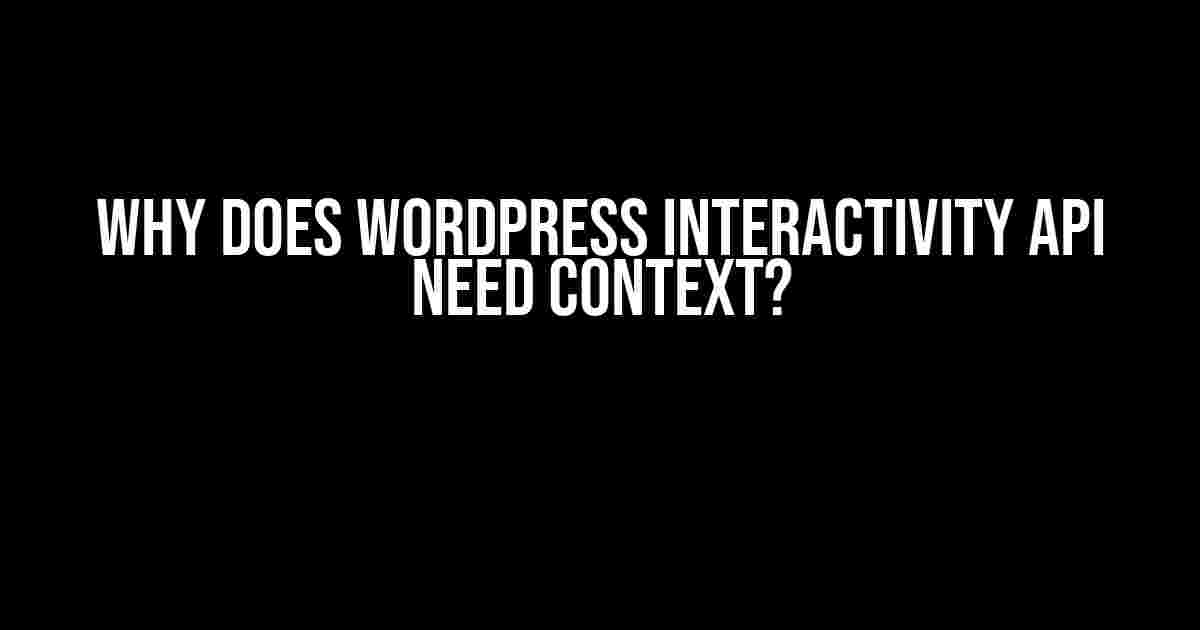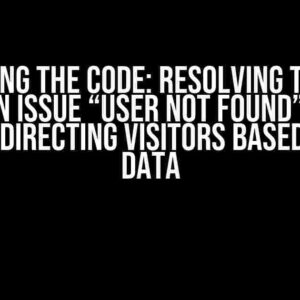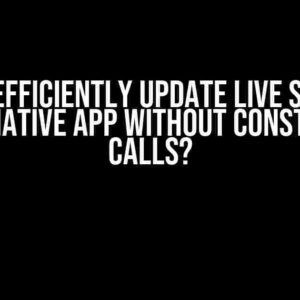Are you tired of dealing with the complexities of WordPress Interactivity API? Do you find yourself wondering why it needs context to function properly? You’re not alone! In this article, we’ll delve into the world of WordPress Interactivity API, explore its inner workings, and uncover the secrets behind its need for context.
What is WordPress Interactivity API?
Before we dive into the importance of context, let’s take a step back and understand what WordPress Interactivity API is all about. In simple terms, WordPress Interactivity API is a set of tools that allows developers to create interactive experiences within WordPress. It provides a framework for building custom plugins, themes, and applications that can interact with the WordPress ecosystem.
Key Features of WordPress Interactivity API
The WordPress Interactivity API offers a range of features that make it an attractive choice for developers:
- Customizable UI components
- Drag-and-drop interface builder
- Real-time data binding
- Support for JavaScript and PHP development
- Native integration with WordPress core
These features enable developers to create sophisticated, engaging experiences that integrate seamlessly with WordPress. However, as we’ll see, the API’s functionality is heavily dependent on context.
The Role of Context in WordPress Interactivity API
So, why does WordPress Interactivity API need context? The answer lies in how the API processes and interprets data. Context provides the API with the necessary information to understand the current state of the WordPress environment, enabling it to make informed decisions about how to render UI components, bind data, and execute interactions.
Types of Context in WordPress Interactivity API
There are several types of context that WordPress Interactivity API relies on:
- Request Context: This type of context provides information about the current HTTP request, including the URL, query parameters, and HTTP method.
- WordPress Context: This context encompasses information about the WordPress environment, including the current user, theme, and plugin settings.
- UI Context: This context is responsible for providing information about the current UI state, including the layout, components, and rendering options.
By combining these types of context, the WordPress Interactivity API can generate a comprehensive understanding of the current environment, enabling it to make informed decisions about how to render UI components and execute interactions.
How to Provide Context to WordPress Interactivity API
Now that we understand the importance of context, let’s explore how to provide it to the WordPress Interactivity API. There are several ways to do this:
1. Using the `wp_interactivity_api()` Function
The `wp_interactivity_api()` function is a convenient way to provide context to the API. This function takes an array of context data as an argument, which can include request context, WordPress context, and UI context.
.wp_interactivity_api(array(
'request_context' => array(
'url' => 'https://example.com',
'query_params' => array(' foo' => 'bar' ),
),
'wordpress_context' => array(
'user' => wp_get_current_user(),
'theme' => wp_get_theme(),
),
'ui_context' => array(
'layout' => 'grid',
'components' => array('header', 'footer' ),
),
));
2. Using the `WP_Interactivity_API_Context` Class
The `WP_Interactivity_API_Context` class provides a more object-oriented approach to providing context to the API. This class can be instantiated and populated with context data, which can then be passed to the API.
.$context = new WP_Interactivity_API_Context();
.$context->set_request_context(array('url' => 'https://example.com', 'query_params' => array(' foo' => 'bar' )));
.$context->set_wordpress_context(array('user' => wp_get_current_user(), 'theme' => wp_get_theme()));
.$context->set_ui_context(array('layout' => 'grid', 'components' => array('header', 'footer' )));
.wp_interactivity_api($context);
Common Pitfalls and Troubleshooting
When working with WordPress Interactivity API, it’s essential to avoid common pitfalls that can lead to context-related issues. Here are some common mistakes to watch out for:
| Error | Description |
|---|---|
| Missing Context | Failing to provide context to the API can result in unexpected behavior or errors. Make sure to provide all necessary context data. |
| Invalid Context | Providing invalid or malformed context data can cause the API to malfunction. Ensure that context data is properly formatted and accurate. |
| Context Conflicts | Conflicting context data can lead to unpredictable behavior. Ensure that context data is consistent and accurate across all components and plugins. |
By avoiding these common pitfalls, you can ensure that your WordPress Interactivity API integrations function smoothly and efficiently.
Conclusion
In conclusion, context plays a critical role in the WordPress Interactivity API. By providing accurate and comprehensive context data, developers can unlock the full potential of the API, creating engaging, interactive experiences that seamlessly integrate with WordPress. Remember to use the `wp_interactivity_api()` function or the `WP_Interactivity_API_Context` class to provide context, and avoid common pitfalls that can lead to errors and unexpected behavior.
With this comprehensive guide, you’re now equipped to tackle even the most complex WordPress Interactivity API projects. So, go ahead and dive into the world of interactive WordPress development – and don’t forget to bring context along for the ride!
Final Thoughts
As we’ve seen, context is the unsung hero of WordPress Interactivity API. By understanding its importance and implementing it correctly, developers can create breathtaking experiences that elevate the WordPress ecosystem. Remember, context is key – so don’t leave it behind!
What’s your experience with WordPress Interactivity API and context? Share your thoughts, tips, and tricks in the comments below!
Frequently Asked Questions
Get the scoop on why WordPress interactivity API needs context!
Why does WordPress interactivity API need context in the first place?
WordPress interactivity API needs context to understand the purpose and intention behind an API request. This context helps the API to make informed decisions and provide accurate results. Think of it like asking a friend for directions – you need to give them your current location and destination so they can guide you accurately!
What kind of context does the WordPress interactivity API need?
The WordPress interactivity API typically needs context such as the current user, the requested resource, and the action being performed. This information helps the API to authenticate and authorize requests, and to provide the most relevant and accurate results.
How does the WordPress interactivity API use context to improve the user experience?
By using context, the WordPress interactivity API can provide personalized and dynamic responses to user requests. For example, it can fetch the user’s favorite posts or recommend relevant articles based on their interests. This leads to a more engaging and interactive user experience!
Can I use the WordPress interactivity API without providing context?
While it’s technically possible to use the WordPress interactivity API without providing context, it’s not recommended. Without context, the API may not be able to authenticate or authorize requests, leading to errors or inaccurate results. Trust us, providing context is worth the extra effort!
How do I provide context to the WordPress interactivity API?
To provide context to the WordPress interactivity API, you can pass relevant data as arguments or headers in your API requests. The WordPress documentation provides detailed guidelines on how to do this, so be sure to check it out! Additionally, many WordPress plugins and themes provide built-in support for context-aware API requests, making it even easier to get started.






